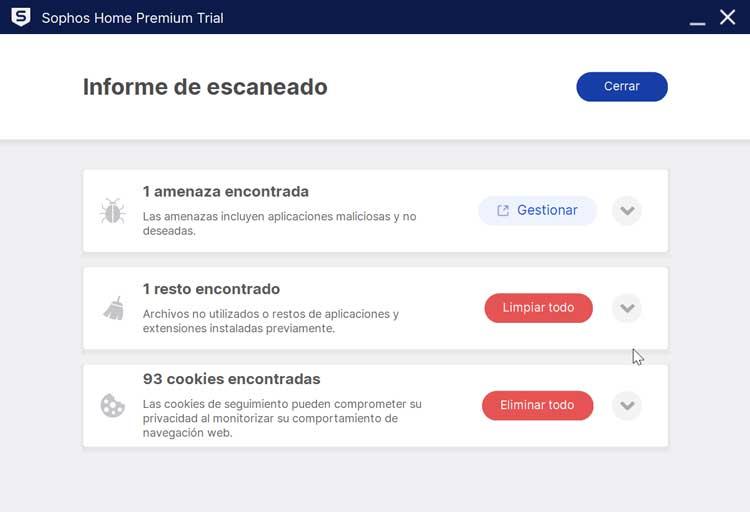Sophos Central, a web-based enterprise console for managing anti-virus software on multiple computers, is available to UW departmental IT and system administrators. For Sophos Endpoint protection on the individual computer please see Sophos Anti-Virus. Contact geoghelp@uw.edu for assistance. Sophos Anti-Virus should already be installed on your UW-owned equipment. If it is not, please contact geoghelp@uw.edu. Sophos Home Premium is available for use on your personal equipment. Scan all external hard drives and thumb drives, particularly if they've been shared with others. Running anti-virus on your devices can be an important part of safeguarding your personal and UW institutional data. Members of the UW community can install a free version of Sophos anti-virus for home use and for unmanaged University-owned computers and devices. Related resources. Securing Laptops Risk Advisory.
On This Page
Sophos Central is the unified console for managing all your Sophos products. Sign into your account, take a tour, or start a trial from here.

General Computing Guidelines
Keep your OS and software up to date!
- Remember to close and restart your web browser regularly to ensure automatic updates can be installed.
- Allow Microsoft Office to auto-update.
- Windows 10 users: Before installing Windows updates, create a System Restore Point. Avoid Feature Updates while working remotely, but do make sure to install Quality and Security updates. If you experience problems after an update, follow Microsoft’s instructions to roll back to the previous restore point and/or uninstall problematic updates. Contact geoghelp@uw.edu for assistance.

Run Sophos
- Sophos Anti-Virus should already be installed on your UW-owned equipment. If it is not, please contact geoghelp@uw.edu.
- Sophos Home Premium is available for use on your personal equipment.
- Scan all external hard drives and thumb drives, particularly if they've been shared with others. If you do not know the origin of a drive, do not plug it into your computer.
Store your data securely
- Use UW devices and systems when working with UW information whenever possible.
- Don’t store University information on non-UW devices. If you do have to use sensitive UW information to a personal computer, delete it as soon as possible.
- Backup essential files. Your only copy of a file should never be on your local hard drive.
- Use UW-approved cloud storage options:
- U: Drive (Requires remote campus connection using Husky On-Net VPN)
Secure Web Browsing
- Conduct personal web browsing and UW-related web use on separate systems as much as possible. Limit personal browsing on your UW-owned computer and/or use a different web browser for that activity.
- Only enter personal information, including usernames and passwords, on secure websites. Secure website addresses start with https://, and your web browser will display a padlock symbol. Check with your particular browser to see where the padlock should be displayed.
- Do not use the same password for multiple websites or accounts. Other best practices regarding passwords
- Don’t use the “remember my password” feature when accessing University information.
- Do not accept untrusted certifications if warned by the browser’s security.
- Keep an eye on the web browser address bar. Be cautious if the address changes unexpectedly or if you click on a link and are taken to an unfamiliar address.

Email Best Practices

- Be mindful of phishing attempts, and follow the best practices to avoid phishing scams recommended by the Office of the Chief Information Security Officer.
- Question the validity of messages with attachments or links claiming to be COVID-related updates, shipping updates, invoices, order confirmations, holiday greetings, etc. If in doubt, verify with the sender prior to opening attachments or links.
- Report phishing attempts or other suspicious messages to UW-IT. The UW CISO's office provides examples of phishing attempts for review. If in doubt, contact geoghelp@uw.edu for further guidance.
Additional Guidance on Working Remotely
Please review the general guidance on working remotely available from UW-IT and from the UW CISO. The CISO website also hosts a series of short videos and risk advisories covering many different security topics.
Teaching Remotely
The UW Center for Teaching and Learning provides general guidance for faculty and instructors teaching remotely. They also offer workshops and open office hours for instructors and faculty to learn more about available technologies.
Canvas
Canvas help for instructors is available directly from UW-IT. The Zoom App is now integrated into Canvas. More information on this feature is available from UW-IT and in the Department’s Zoom guide.
Zoom
In addition to the Zoom Help Center, there is now extensive documentation related to using Zoom in a teaching environment. See the links below for more information. If you have specific questions that you cannot find answers to, please contact geoghelp@uw.edu for further support.
Uw Sophos Download
- See Zoom Basics and Advanced Features for Learning Environments for updates on common problems, troubleshooting, and recommended settings.
- UW IT's guide for Teaching with Zoom provides very basic information for getting started.
- UW IT has also published updated guidance for securing your meetings.
- The UW iSchool has published a comprehensive document on Preventing Zoombombing.
- The UW iSchool also provides detailed Zoom tutorials on YouTube covering many features and topics.
Uw Sophos
- Share:
